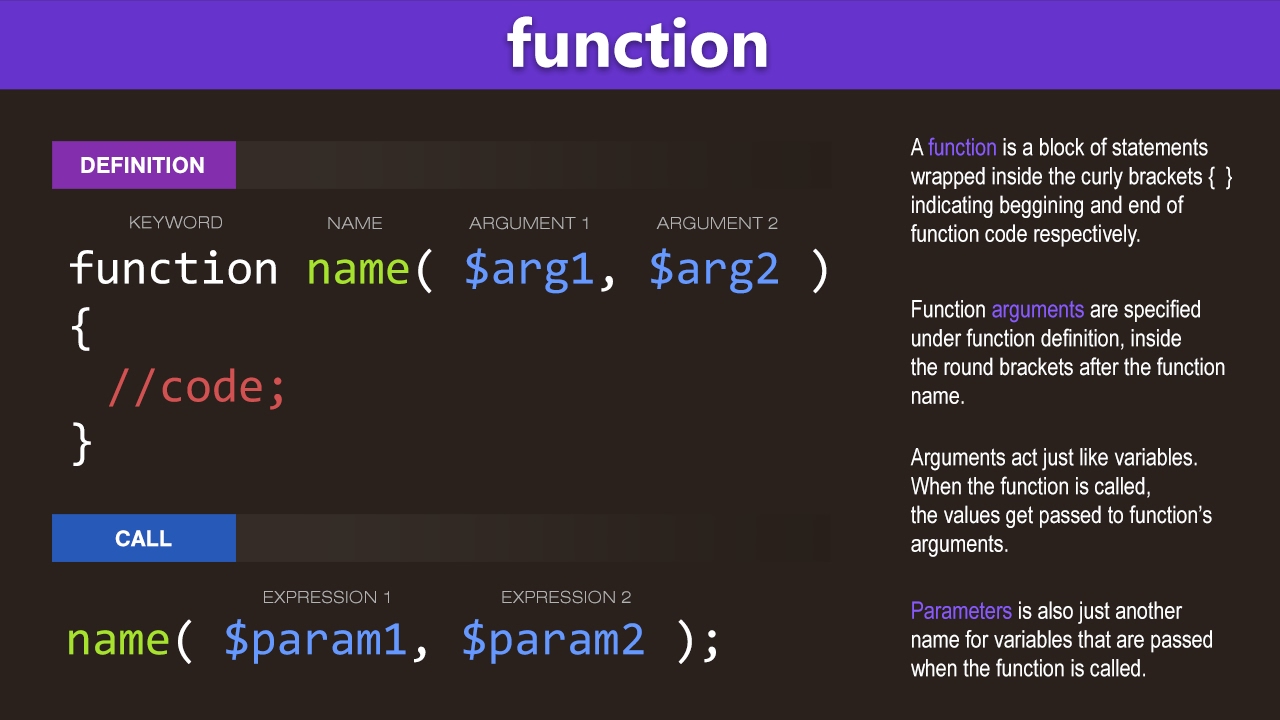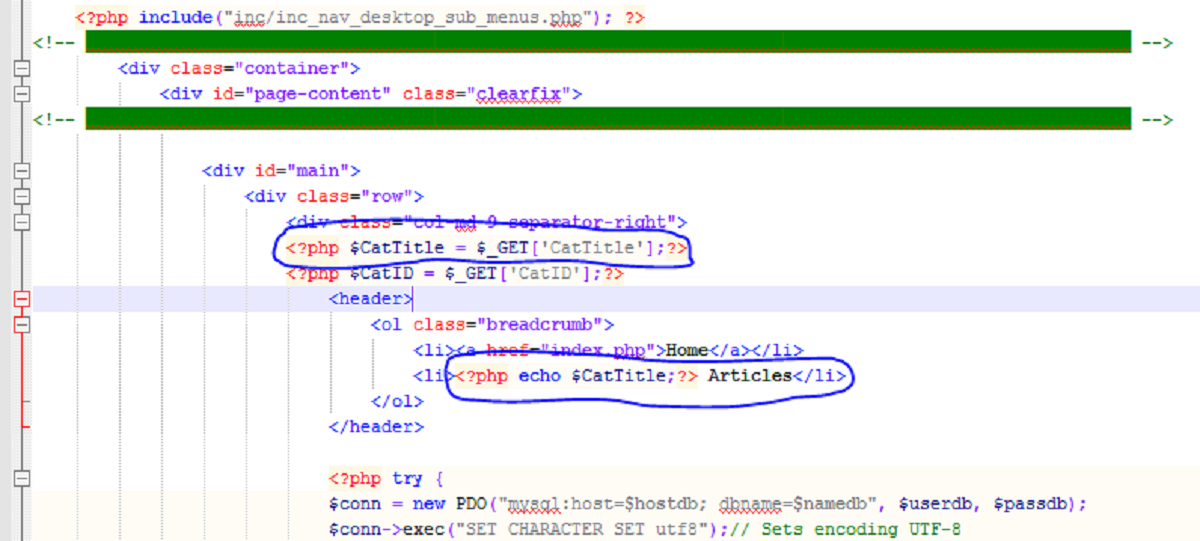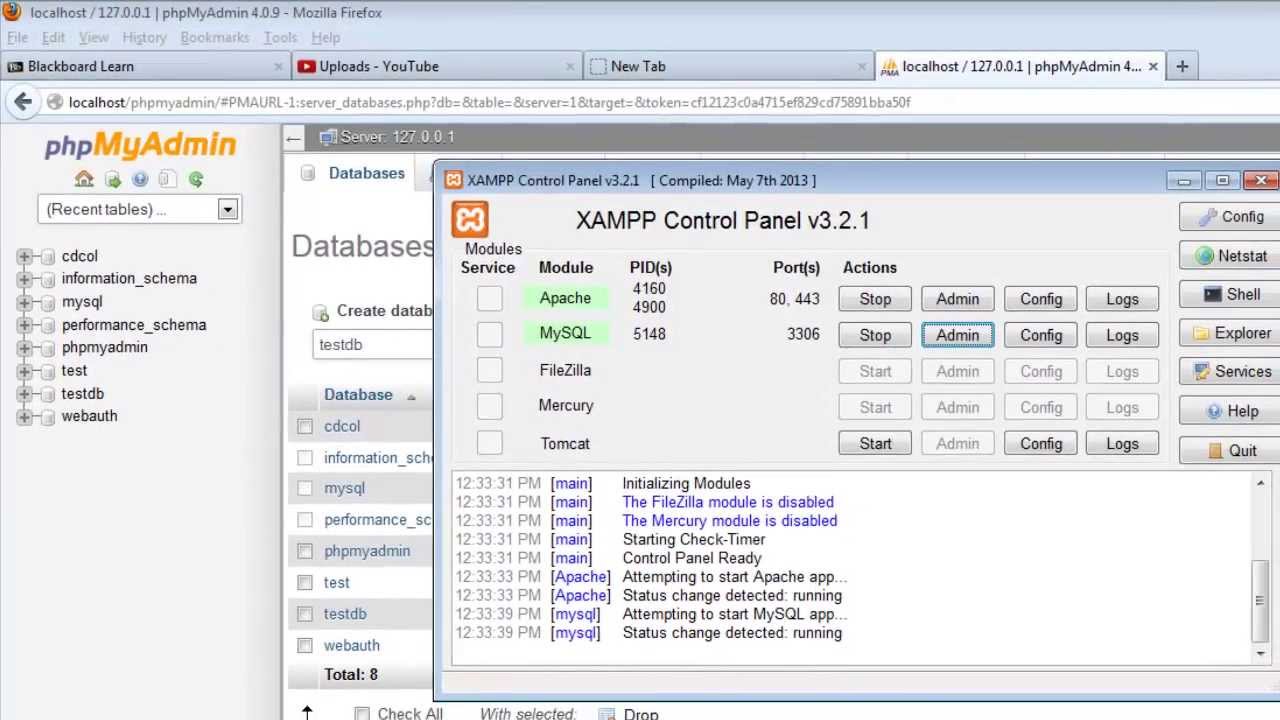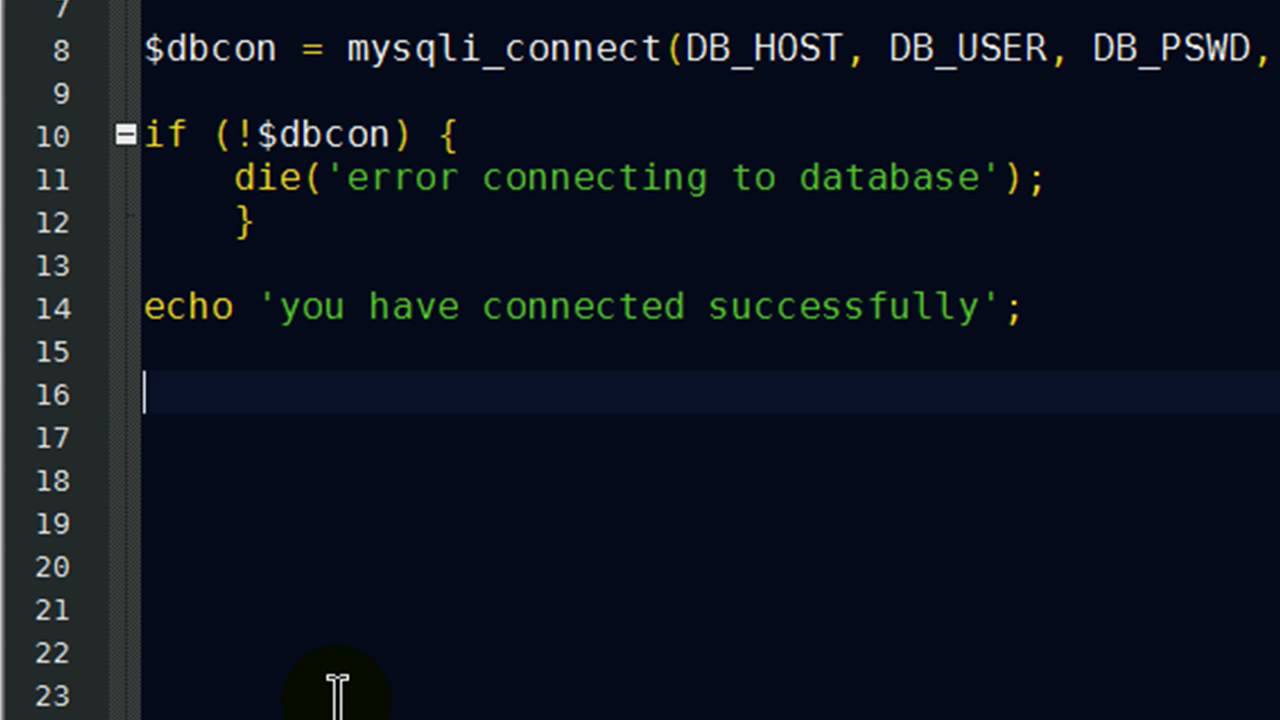What Is an Argument in Coding
In the world of coding, an argument refers to a value or a variable that is passed into a function or method. It provides the necessary information for the function to perform a specific task. Arguments play a key role in programming, allowing developers to create flexible and reusable code.
When a function is defined, it may require one or more arguments to be passed in order to execute its instructions accurately. These arguments act as placeholders that can be replaced with actual values or variables when calling the function. Think of them as the inputs that the function needs to operate.
Arguments in coding come in different types, each serving a specific purpose. The most common types of arguments include required arguments, default arguments, keyword arguments, and variable-length arguments.
1. Required Arguments: These are arguments that must be provided in a specific order when calling a function. Failure to pass these required arguments will result in an error. For example, a function that calculates the area of a rectangle may require the length and width as required arguments.
2. Default Arguments: Unlike required arguments, default arguments have predefined values. If these arguments are not passed when calling the function, the default values will be used. This allows for more flexibility and makes certain arguments optional. For instance, a function that calculates the cost of an item with a default sales tax rate.
3. Keyword Arguments: With keyword arguments, the caller explicitly mentions the argument name followed by its corresponding value when calling a function. This allows the arguments to be passed in any order, making code more readable and less prone to errors. For example, a function that calculates the area of a triangle may accept arguments such as base and height using keywords.
4. Variable-length Arguments: Sometimes, it is necessary to define a function that can accept a varying number of arguments. Variable-length arguments are denoted by an asterisk (*), and they can receive any number of positional arguments. This is useful when dealing with multiple inputs or unknown quantities of data.
Passing arguments to functions is a fundamental concept in coding. It allows developers to create modular, reusable, and efficient code. By understanding the different types of arguments and their purposes, it becomes easier to design and implement functions that meet specific requirements.
Furthermore, it is important to note that arguments can be modified within a function. This means that the values of the arguments can change as the function executes, allowing for dynamic and flexible programming.
In summary, arguments in coding are the inputs passed into functions or methods. They provide the necessary information for the function to execute its instructions accurately. By utilizing different types of arguments, developers can create versatile and adaptable code that can handle a wide range of scenarios.
Introduction
When it comes to coding, understanding the concept of arguments is essential. Arguments are values or variables that are passed into functions or methods, providing crucial information for the program to execute tasks effectively. They provide flexibility and reusability, allowing developers to create powerful and modular code.
In this article, we will explore the concept of arguments in coding. We will delve into the different types of arguments, including required arguments, default arguments, keyword arguments, and variable-length arguments. Additionally, we will discuss how to pass arguments to functions and the importance of modifying arguments within a function.
Understanding arguments is fundamental to writing efficient and effective code. By grasping the concept, you can design functions that accept the necessary inputs and produce the desired outputs. Whether you are a beginner or an experienced coder, this article will serve as a comprehensive guide to help you master the art of using arguments in your code.
By the end of this article, you will have a clear understanding of what arguments are, how they are used, and why they are important in coding. You will also have the knowledge to implement different types of arguments and make adjustments to them within a function.
So, let’s dive into the world of arguments in coding and enhance your programming skills!
Understanding Arguments
Arguments, in the context of coding, refer to the values or variables that are passed into functions or methods. They serve as the inputs for the function, providing the necessary data for the program to perform specific tasks. By understanding how arguments work, you can effectively use them to create dynamic and reusable code.
When a function is defined, it may require one or more arguments to be provided when calling the function. These arguments act as placeholders, representing the data or values that the function needs to complete its operations. Think of them as supplying the necessary ingredients for a recipe. Without the right arguments, the function may not produce the desired results.
In most programming languages, arguments are enclosed in parentheses after the function name. For example:
function calculateArea(width, height) {
// Function code here
}In the above example, the function calculateArea requires two arguments: width and height. These are the values that the function will use to calculate the area of a shape.
Arguments can come in various types, depending on the requirements of the function. They can be numbers, strings, booleans, objects, or even other functions. The type of the argument must match the expected type for the function to work correctly.
Another important concept to understand is the order in which arguments are passed. For functions that require multiple arguments, the order matters. The values should be provided in the same sequence as defined in the function. Failing to pass the arguments in the correct order may lead to unexpected or erroneous results. It is crucial to double-check the order when calling functions with multiple arguments.
Furthermore, arguments can be referenced within the function using their corresponding parameter names. These parameter names act as variables that hold the values passed into the function. Developers can manipulate and process these arguments as needed to perform the desired operations.
Overall, understanding arguments is vital in coding as they enable the passing of values or variables into functions. They provide the necessary input for the function to execute its instructions accurately. By correctly defining and passing arguments, you can create code that is flexible, reusable, and capable of handling a variety of scenarios.
Types of Arguments
There are different types of arguments that can be used in coding, each serving a specific purpose. By understanding these types, you can create more flexible and versatile functions. Let’s explore the four main types of arguments: required arguments, default arguments, keyword arguments, and variable-length arguments.
1. Required Arguments: As the name suggests, required arguments are values or variables that must be provided in a specific order when calling a function. The function expects these arguments to be passed, and failure to do so will result in an error. Required arguments ensure that the necessary data is available for the function to execute correctly. For example, a function that calculates the area of a rectangle may require the length and width as required arguments.
2. Default Arguments: Default arguments, on the other hand, have predefined values set in the function definition. If no value is passed for these arguments when calling the function, the default values will be used. Default arguments provide flexibility by making certain arguments optional. This allows the function to have sensible default behavior while still allowing customization when needed. For instance, a function that calculates the cost of an item with a default sales tax rate.
3. Keyword Arguments: Keyword arguments allow the caller to specify the argument name followed by its corresponding value when calling a function. This provides the flexibility of passing arguments in any order, making the code more readable and less prone to errors. Keyword arguments enhance the clarity of the code by explicitly mentioning the intended purpose of each argument. They are particularly useful when dealing with functions that have numerous arguments or when you want to override default values. For example, a function that calculates the area of a triangle may accept arguments such as base and height using keywords.
4. Variable-length Arguments: Sometimes, functions need to accept a varying number of arguments. This is where variable-length arguments come into play. Denoted by an asterisk (*), these arguments can receive any number of positional arguments. Variable-length arguments provide the flexibility to handle multiple inputs or unknown quantities of data. They allow developers to write functions that can adapt to different scenarios. For instance, a function that computes the sum of any number of integers.
Understanding the different types of arguments allows you to tailor your functions to specific requirements. By incorporating required arguments, default arguments, keyword arguments, and variable-length arguments, you can create code that is more robust, reusable, and adaptable to different use cases.
Required Arguments
Required arguments are the foundation of functions that need specific values or variables to operate correctly. When calling a function with required arguments, you must provide the expected values in the same order they are defined in the function’s parameter list. Failure to do so will result in an error.
Required arguments ensure that the essential data is available for the function to perform its intended operations. They act as inputs that the function relies upon to produce the desired results.
Let’s consider an example function that calculates the area of a rectangle. The function requires two arguments: length and width. These arguments are necessary for the function to compute the area accurately:
function calculateArea(length, width) {
let area = length * width;
return area;
}
let rectangleArea = calculateArea(10, 5);
console.log(rectangleArea);
In this example, we call the calculateArea function and pass the arguments 10 and 5 to represent the length and width of the rectangle, respectively. The function then multiplies the length by the width to calculate the area, which is then returned.
Required arguments are essential when you need specific data to be passed to a function. They ensure that the function receives the necessary inputs to perform its intended operations accurately. By providing the required arguments in the correct order, you can create functions that produce the desired results without unexpected errors.
It is important to note that the number and order of required arguments in a function must be consistent when calling the function. Failing to pass the required arguments or providing them in the wrong order will lead to errors and incorrect outputs. Therefore, it is crucial to carefully define and pass required arguments to ensure the proper functioning of your code.
Default Arguments
Default arguments provide a means to set predefined values for function parameters. These values are used when the caller does not provide a specific value for the corresponding argument. Default arguments offer flexibility by making certain parameters optional.
When defining a function with default arguments, you assign a default value to one or more parameters. If the caller does not provide a value for these parameters, the default value is used instead. This way, the function can still work even if not all arguments are explicitly passed.
Let’s take an example of a function that calculates the cost of an item with a default sales tax rate:
function calculateCost(price, taxRate = 0.1) {
let cost = price + (price * taxRate);
return cost;
}
let totalCost = calculateCost(50);
console.log(totalCost);
In the above example, the calculateCost function has two parameters: price and taxRate. The taxRate parameter has a default value of 0.1, representing a 10% sales tax rate. When calling the function, we only provide the price argument, and the default value for taxRate is used. As a result, the function calculates the total cost by adding the price to the sales tax.
Default arguments allow you to create functions with sensible default behavior. They provide flexibility for callers who may not need to specify every parameter explicitly. This can make your code more concise and easier to use.
It is important to note that default arguments should be used thoughtfully. They are most effective when used for values that are commonly used but can be customized if necessary. Default argument values should be chosen carefully to ensure they provide a meaningful default behavior.
By utilizing default arguments, you can create functions that have predefined behaviors while still allowing customization when needed. This can enhance the versatility and usability of your code.
Keyword Arguments
Keyword arguments allow for the explicit passing of arguments by associating them with their respective parameter names when calling a function. Unlike required and default arguments, which rely on the position of the arguments, keyword arguments provide flexibility by allowing the caller to specify the argument name followed by the value.
By using keyword arguments, the order in which the arguments are passed no longer matters. This makes the code more readable, reduces the chances of errors due to misplaced arguments, and allows for more explicit and intuitive function calls.
Let’s consider an example of a function that calculates the area of a triangle, which accepts keyword arguments for the base and height:
function calculateTriangleArea(base, height) {
let area = (base * height) / 2;
return area;
}
let triangleArea = calculateTriangleArea(height=5, base=10);
console.log(triangleArea);
In the above example, the calculateTriangleArea function can accept arguments in any order, thanks to the use of keyword arguments. Instead of relying on the order of the arguments, we explicitly mention the argument name followed by its value: height=5 and base=10. This makes the code more readable and self-explanatory.
Keyword arguments are particularly useful when dealing with functions that have numerous parameters or when you want to override default values. They allow for more explicit function calls, as the caller can specify exactly which arguments they are providing and what they represent.
It’s important to note that mixing keyword arguments with positional arguments (arguments passed based on their position) is possible but should be done carefully to avoid confusion. When using keyword arguments, it’s recommended to consistently use them throughout the function call to maintain clarity and readability.
By leveraging keyword arguments in your code, you can enhance the readability, reusability, and maintainability of your functions. They allow for explicit and intuitive function calls, ultimately resulting in cleaner and more robust code.
Variable-length Arguments
Variable-length arguments, also known as varargs, allow functions to accept a varying number of arguments. They are denoted by an asterisk (*) before the parameter name and can receive any number of positional arguments.
Variable-length arguments provide the flexibility to handle scenarios where the number of inputs may vary or is unknown. They allow you to write functions that can adapt to different use cases without explicitly defining each argument.
Let’s consider an example of a function that calculates the sum of any number of integers:
function calculateSum(...numbers) {
let sum = 0;
for (let number of numbers) {
sum += number;
}
return sum;
}
let totalSum = calculateSum(1, 2, 3, 4, 5);
console.log(totalSum);
In the above example, the calculateSum function uses variable-length arguments by using the spread operator (…) before the parameter name numbers. This allows the function to accept any number of arguments, which are then looped through and added to the sum variable.
Variable-length arguments are useful when dealing with operations that involve multiple inputs or when the exact number of arguments is unknown in advance. They provide greater flexibility, as you can pass in varying amounts of data without creating multiple function overloads or having to explicitly define each argument.
It’s important to note that variable-length arguments are treated as an array-like object within the function, meaning you can perform array operations on them, such as looping or accessing individual elements.
When using variable-length arguments, it’s essential to ensure that the function is designed to handle different amounts of data gracefully. You may need to include additional logic to handle cases where no arguments are passed or when specific conditions must be met.
By utilizing variable-length arguments in your code, you can create functions that are more flexible and adaptable. They allow for a dynamic approach to handling varying quantities of data, making your code more scalable and robust.
Passing Arguments to Functions
Passing arguments to functions is a fundamental concept in coding. It involves providing the necessary values or variables that a function requires to execute its instructions accurately. By understanding how to pass arguments effectively, you can ensure the proper functioning of your functions.
When calling a function and passing arguments, it’s crucial to consider the following:
1. Positional Order: For functions with multiple arguments, the order in which the arguments are passed must match the order defined in the function’s parameter list. This ensures that the correct values are assigned to the corresponding parameters.
2. Explicit Values: When passing arguments, provide explicit values or variables that match the expected data type or format defined in the function’s parameter list. This ensures compatibility and avoids type errors or unexpected behavior.
3. Required Arguments: Make sure to pass all the required arguments when calling a function. These are the values or variables that the function needs to execute correctly. Omitting any required argument will result in an error or incomplete execution of the function.
4. Default and Keyword Arguments: Take advantage of default arguments by omitting them when they are not necessary to customize. You can also use keyword arguments to explicitly assign values to specific parameters, regardless of their position. This enhances the readability and clarity of the function call.
5. Variable-Length Arguments: When using functions that accept a varying number of arguments, ensure that the arguments are passed correctly, separated by commas. For functions with variable-length arguments, you can pass any number of values or variables as needed.
By following these guidelines, you can ensure that the arguments you pass to functions are properly received and utilized. This allows the functions to perform their intended tasks accurately and produce the desired results.
Remember, the way you pass arguments can significantly impact the behavior of your code. Therefore, paying attention to the proper positional order, explicit values, and using the appropriate argument types will help you write cleaner, more efficient, and error-free code.
Modifying Arguments
In coding, arguments can often be modified within a function. This means that the values of the arguments can change as the function executes, allowing for dynamic and flexible programming. Modifying arguments within a function allows you to manipulate their values or perform calculations to produce desired outcomes.
When modifying arguments, it’s important to understand that the changes made to the arguments within the function are only local to that specific function scope. The original values passed as arguments to the function will remain unchanged outside of the function unless the modified arguments are explicitly returned.
Let’s take an example of a function that doubles the elements of an array passed as an argument:
function doubleArrayValues(array) {
for (let i = 0; i < array.length; i++) {
array[i] *= 2;
}
}
let numbers = [1, 2, 3, 4, 5];
doubleArrayValues(numbers);
console.log(numbers);
In this example, the doubleArrayValues function takes an array as an argument and modifies it by doubling the value of each element. As a result, the original array is mutated, and when we print the array after calling the function, we see the modified values.
Modifying arguments within a function can be useful in scenarios where you want to update or transform the original data without having to create new variables or arrays. It allows you to directly modify the passed arguments, resulting in optimized memory usage and improved performance.
However, it's important to exercise caution when modifying arguments. Make sure to clearly document the behavior of your functions to prevent unexpected side effects or confusion. If you want to preserve the original values of the arguments, consider creating copies or using them in immutable contexts.
By understanding how to modify arguments within functions, you can leverage their flexibility to create dynamic and powerful code. Whether it's updating values, performing calculations, or transforming data, the ability to modify arguments empowers you to create efficient and customized solutions.
Conclusion
Understanding and effectively using arguments in coding is essential for creating flexible and reusable functions. By providing the necessary inputs, arguments enable functions to perform specific tasks accurately and efficiently. Throughout this article, we have explored the different types of arguments, including required arguments, default arguments, keyword arguments, and variable-length arguments.
Required arguments ensure that the vital data is provided in a specific order when calling a function. Default arguments provide predefined values for parameters, making certain arguments optional. Keyword arguments allow for explicit passing of arguments by using the argument name followed by the corresponding value. Variable-length arguments provide flexibility for functions to handle a varying number of inputs.
Passing arguments to functions is a fundamental concept that involves considering the positional order of arguments, providing explicit values, and ensuring required arguments are passed correctly. Modifying arguments within a function allows for dynamic and flexible programming, empowering you to manipulate values or perform calculations to achieve desired outcomes.
By mastering the use of arguments, you can create efficient, modular, and adaptable code. Whether you're a beginner or an experienced coder, understanding and leveraging the power of arguments will enhance your programming skills and allow you to create robust and scalable applications.
So, apply your knowledge of arguments in coding and continue to explore their capabilities as you dive deeper into the world of programming. With a firm grasp on arguments, you'll be well-equipped to solve complex problems with elegance and efficiency.
























